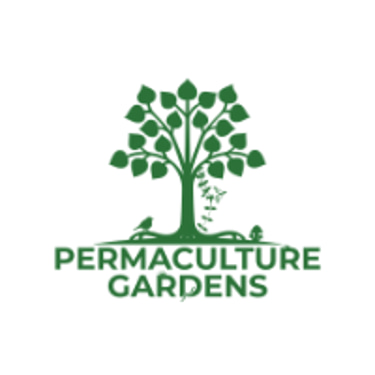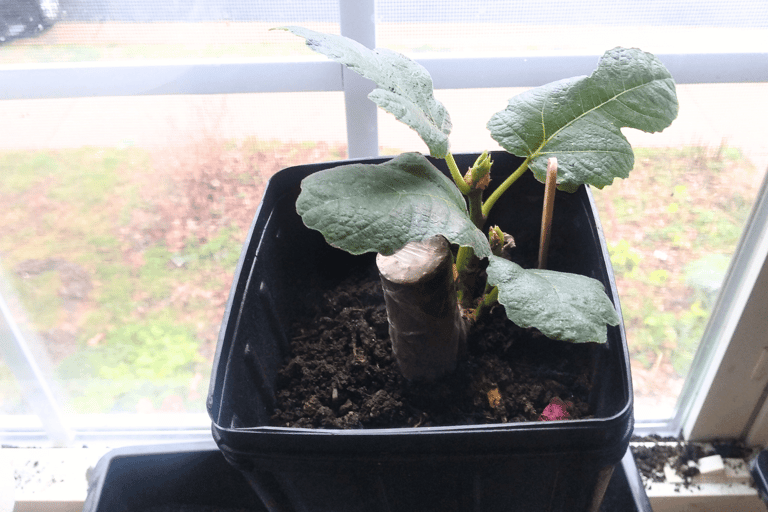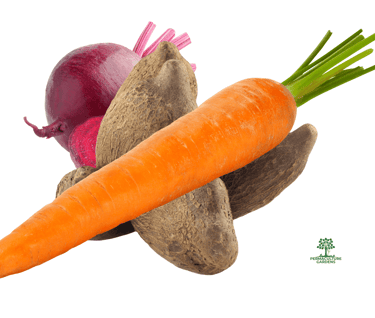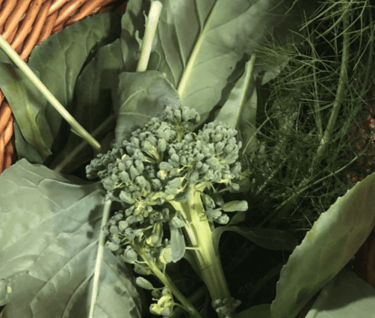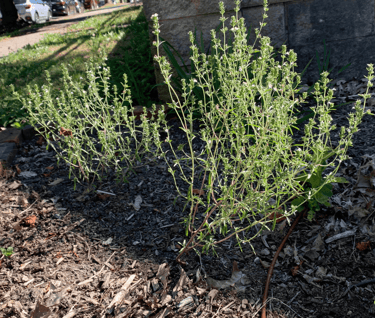3 Steps to Gardening Year-Round
While it is certainly more challenging to grow in the cold, it is not outright impossible. And with warming climates, growing food from the garden in all four seasons is a skill that we all need to learn..
1/2/202412 min read
3 Steps to Year-Round Gardening
Disclaimer
This Gardening Year-Round article contains some affiliate links. The small commission we receive if you choose to purchase goes towards making year-round garden education available for free! We do not affiliate for anything we do not personally use. Thanks so much for your support!
Gardening Year-Round Video

Growing Vegetables All Year
In our several years of growing food, we’ve often been told, “I can’t possibly garden year-round because I live in a very cold climate."
While it is certainly more challenging to grow year-round gardens during the winter, it is not outright impossible. And with warming climates, vegetable gardening in all four seasons is a skill that we all need to learn.
In this article, we will share how we were able to grow food through the middle of winter by unpacking these three simple year-round gardening steps.
Know and Grow Vegetables Suited to Each Growing Season
1. Extend Your Harvest Season into Winter
The "Hortillonages" or the historic "Market Gardens of Amiens, France still used by seven market gardeners, Wikimedia Commons


Use Low Tunnels to Extend Your Season
In the late 19th and early 20th century, Parisian market gardeners continued to grow throughout the winter to keep tables in France stocked with fresh produce.
Without relying on petroleum-based technology to fuel their growth, the French used green and animal manure to keep their crops warm during the winter. Horse manure, for instance, allowed them to fertilize their small plots for maximum efficiency continually.
Many French Market gardens may be gone now, but you can still see the markets and Hortillonages of Amiens here where seven market gardens use these historic gardening grounds to continue a French tradition.
Like the French, we too can extend our harvest season into the winter. It's certainly a mindset shift and a choice that we can make when growing food.
Four-Season Gardening with Eliot Coleman
We have lost many of these techniques and tips for growing crops in winter conditions. Fortunately, however, Eliot Coleman, a market gardener in Harborside, Maine, revived these organic farming methods in the 1990s.
Since then, he has advocated for four-season growing and has inspired and motivated growers to extend their growing seasons.
His books, specifically, " The Winter Harvest Handbook " and " Four-Season Harvest " are great resources for those wishing to garden year-round.
After careful observation and experimentation, Eliot noticed that many winter vegetables were more sensitive to temperature changes than the seasonal reduction in the sun's irradiance (a measure of the sun's radiation, measured in watts per square meter).
By focusing on low-cost methods to raise the soil and air temperature, he was able to get two extra seasons of growing (fall and winter).
After experimenting with various solutions, he invented a two-layer low tunnel hoop house solution that is economical and easy to set up for your raised beds.
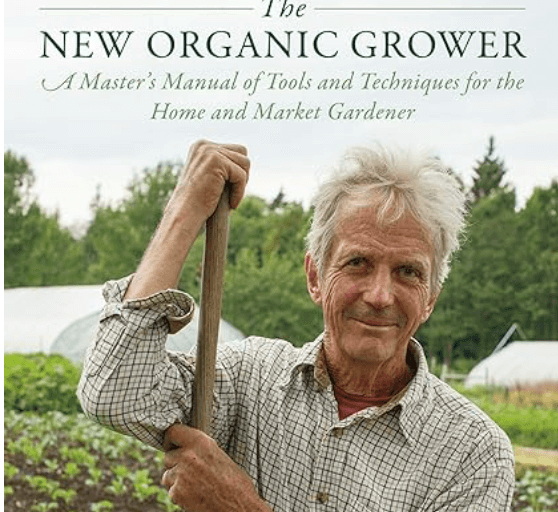

Fifty Two Weeks of Lettuce with Niki Jabbour
Another revered four-season gardener is Niki Jabbour. Her books, " The Year-Round Vegetable Gardener, " and " Growing Under Cover " detail how she can grow lettuce (among other edible crops year-round) in a cold Canadian climate as well as manage her pests by using row covers.
Eliot Coleman in the 10th Anniversary Cover of "The New Organic Grower"
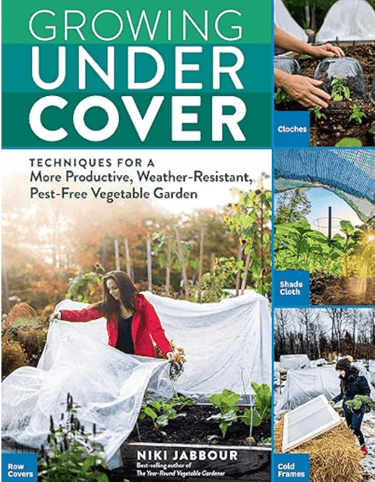

How to Build a Low Tunnel
Purchase 1/2" aluminum electric conduit (usually comes in 10ft lengths).
Bend each conduit to the desired arc using a bender tool.
Use the conduits as ribbing and secure them in place.
As the weather cools, add a row cover or knitted shade cover over the ribbing (Use clips or snap clamps to secure the row cover)
When the weather further cools, add transparent greenhouse film for the second layer of protection.
Overall, using low tunnels can keep the temperature inside the hoops about six degrees warmer than the outside weather, which in many cases is just enough to keep hardy vegetables from receiving frost damage.
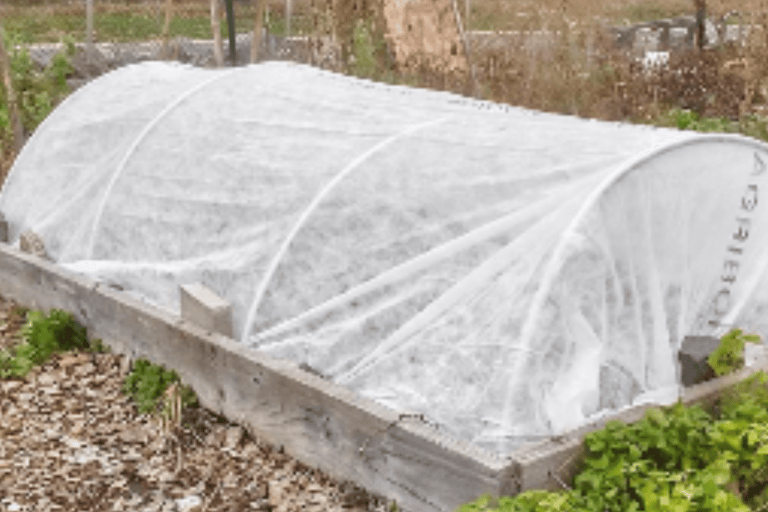

Materials:
Low Tunnels Don't Cut it in Minnesota
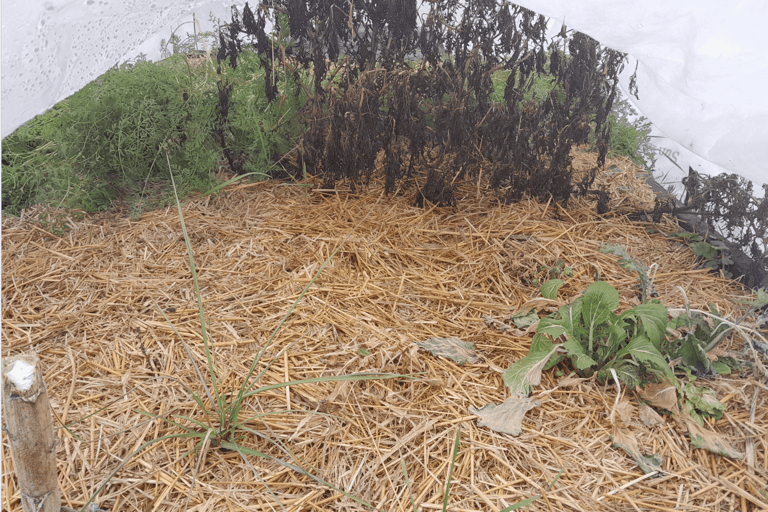

You can still grow lots of leafy greens under low tunnels.
Kelly from Minnesota tried growing under low tunnels. She extended her season for vegetables, but many of them did not survive the entire winter.
Six degrees does not make a difference when your temperatures dip below freezing for a very long time. In places like Minnesota and higher latitudes, you will need to resort to Eliot Coleman's technique of building a "High Tunnel" and then using a row cover or low tunnel to create a climate that is more akin to USDA growing Zone 7.
More on "High Tunnels" in the greenhouse section of this article.
You too, can easily build a low tunnel used by the authors above. Follow the directions below for a cost-effective and simple setup.
Growing indoors is another option for growing through the winter
Cold Frames
Below are a few other techniques for protecting your winter crops. These options are best suited for suburban/urban gardens. Note: We deal with indoor growing on this blog.
2. Protect Your Winter Plants
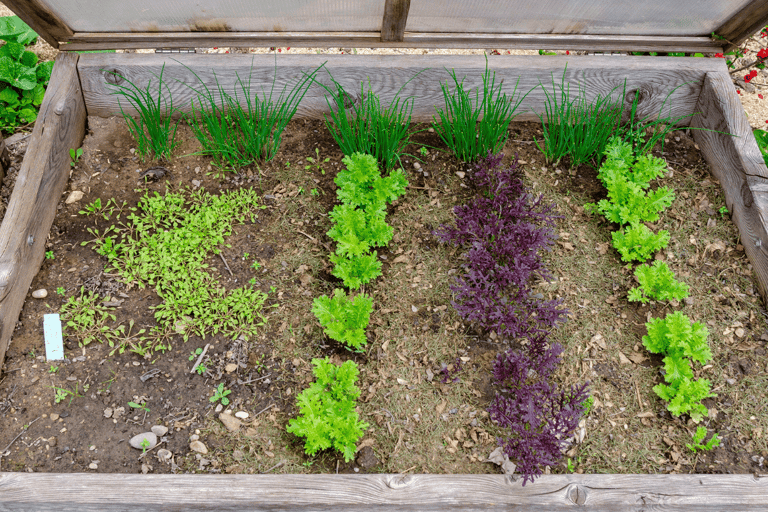

Cold Frames can be made from recycled window panes.
A cold frame consists of a box with a clear sloped lid, usually glass or plastic. The structure can be buried in the ground and collects the sun's heat during the day. A well-made cold frame can shift your USADA growing zone up by one zone. For example, if you are in Zone 6, the cold frame could allow you to grow like it is in Zone 7.
You may need to vent the air in the box on warm days during the winter so the plants don't overheat.
Cloches
An old technique involves placing a clear glass or plastic bowl with a wide lip over each plant. Seedlings and young plants get established better in this environment. A variation on this involves the container having walls filled with water. The water absorbs heat during the day and, even when frozen, protects the plants inside. (Think of an igloo).
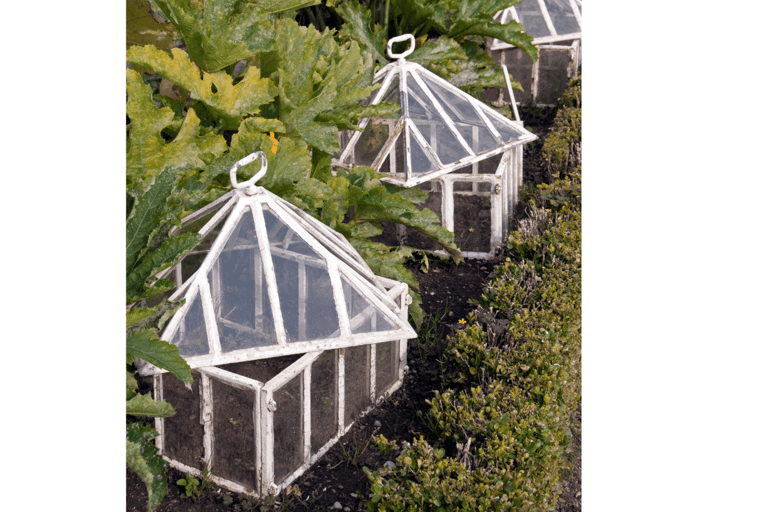

Victorian cloches like these are hard to find.
Greenhouses
Pro Tip: If you are thinking of building a greenhouse, and your farm is classified as farmland, know that there are government incentives to fund the building of a “High Tunnel” which serves as a greenhouse in many American farmscapes.
Unlike low-tunnels that are easily taken down after the cold season and reused next year, greenhouses are more permanent structures.
Site your greenhouse where it can benefit from maximum sunlight. If this is not possible due to steep slopes or structures, make sure it is free from the shade of trees or buildings. You want it to be fairly level (with a little slope so that the water does not pool inside the greenhouse). Also note, that after a few years, the in-ground soil inside a greenhouse may need amending from lack of exposure to the elements. The best greenhouses are made of durable materials that are guaranteed to last years. Here are a few of our choice picks:

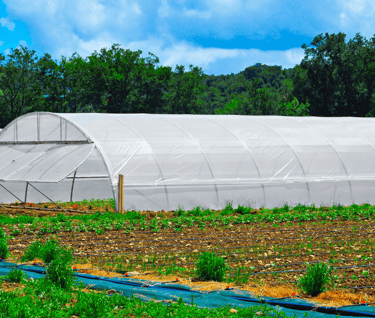

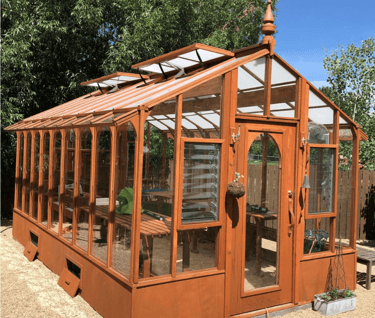


Jannsens (sold in the US by Exaco)
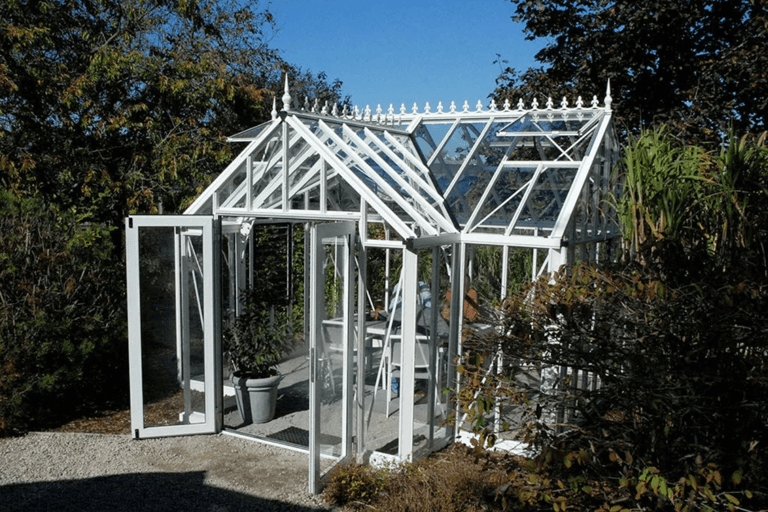

Eco Systems Design Inc - custom build greenhouses
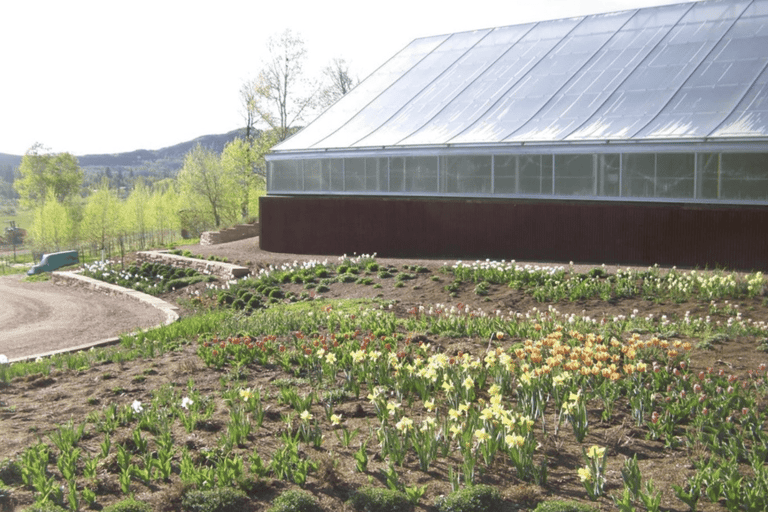

This Colorado-based company marries engineering with permaculture in their custom-made greenhouse designs.
Knowing the best time to grow your crops is key to year-round gardening.
The Seasonality of Crops
3. Know & Grow Vegetables Suited to Each Growing Season
Apart from the greenhouse, the season extenders listed above (cloche, cold frame, and low tunnel) help to insulate your crops from the cold weather, but they won't change the environment enough that you can grow summer-fruiting crops like tomatoes and melons during the wintertime.
Your knowledge of the appropriate winter-hardy vegetables to grow is key to ensuring a winter harvest with some frost protection.
Similarly, knowing what grows well in the spring and summer can also. mean timing your plants for a longer-lasting harvest.
Although we can garden year-round, it doesn't mean we can grow whatever we want in our climate. If you are planning to grow a vegetable garden for as long as you can given your climate, you need to think three months ahead. For instance, plant your fall/winter crops in the late summer. This is called “crop rotation," a topic we will discuss in greater detail in a future blog.
Unfortunately, many of us have forgotten what crops are "in season" because we can buy several summer-only crops from the groceries year-round. Tomatoes, oranges, and pineapples are sourced from miles away and give the illusion that everything we want is available to us year-round.
We offer a little primer on the "seasonality of crops" in the temperate climate below. We
As far as annual vegetables go, leafy greens and root crops seem better at handling frost temperatures (below 32 F / 0 C). Here's a good selection of these crops:
Select the Right Cool-Weather Crops
Leafy Greens
Kale
A hardy form of cabbage that can establish a deep enough root that it can survive cold winters in Zone 7b.
Lettuce
The lettuce family is quite broad, and there are many heirloom varieties (Artic King, Ice Queen, etc.) that are hardy down to freezing and even then can survive the cold if their roots are well-established and mulched. Extra layers of protection can ensure you enjoy a winter salad from your garden from leafy greens like lettuce.
Mache
Mache is a nice hardy salad green that grows fast and tastes great for a change of pace.
Miner's Lettuce
A short, spreading green was first found by miners looking for food during the 1849 California gold rush. It has a nice crunch similar to bean sprouts and is high in vitamin C.
Collards/Brussel Sprouts/Tatsoi
There are several brassicas other than Kale that do well in cold weather (most brassicas prefer cooler weather to thrive). Collards are like big, loose cabbages. You can harvest Brussels sprouts' leaves separate from their more well-known side shoots. And Tatsoi is very tasty in stir-fries (although they are not quite as hardy as the others).
Spinach
Spinach is another hardy green vegetable. It's important to start this one earlier in the summer/fall to establish it well. I've noted that it doesn't grow much if you transfer the seedlings too late into the fall.
Farmers use nitrogen-fixing legumes such as alfalfa, clover, and winter peas to improve the quality and fertility of soil. These "cover crops" as well as winter grains like barley and oats are not edible options in a suburban or urban garden, but can be grown (and harvested before they flower) to "build soil."
Winter Legumes & Cover Crops
Fava Beans
Where regular peas start to die off around freezing temperatures, Fava beans are a bit more hardy and withstand temperatures down to 20F / -6C. They also establish a deeper root system and more foliage than peas, so they can produce more green fertilizer. The only pain with Fava beans is that they require double shelling, which is time-consuming.
While Favas can continue to grow in the cold, they may not create a crop due to a lack of pollinators until the weather turns warm enough for bees to make the beans fruit. Still, it is a good "soil builder" as well as yummy green when it is too cold for other edibles to grow.
Root Crops
Carrots
Carrots are a hardy biennial that grows sweeter as the winter weather sets in as they converts some of their starch into sugars to survive the cold temperatures. If you time your plantings correctly, you can pull up carrots the whole winter.
Parsnips
A relative of the carrot, parsnips require fresh seed to be viable, but they grow steadily during the winter months and rapidly increase in size during the early spring months. Like carrots, they taste sweeter in the winter months.
Beets
Beets grow slowly during the winter months. But you can harvest this root vegetable's leaves and use them during the winter in the same way as spinach and Swiss chard. Because Beets grow greens so quickly, you can continuously harvest their leaves during the winter and pick the beetroots in the spring.
Onions/Garlic
Many onions are also biennial, so plant them in the fall and harvest them in the spring/summer of the following year. Of particular interest for winter growing are leeks and garlic, which can handle most of the cold weather thrown at them without any problem.
A Few Cold-Tolerant Herbs (Zone 7)
Cilantro
Parsley
Thyme
Lemon Balm
Comfrey
Oregano
Rosemary
Sage
Now that we've covered cool-weather crops, you will want to start thinking of transitioning your vegetable garden to warm-weather crops in the early spring. This process is called succession planting.
The most popular garden edibles are usually summer crops. Who doesn't want the "too many tomato or cucumber" problem? Ensure a bountiful harvest by planning your summer crops ahead.
Summer vegetables are best started late winter to mid-spring. If you live in an area with a long cool-climate season, you can extend the growth of these vegetables by using the "season extenders" listed above during the spring and then again in the fall. By "bookend-ing" your summer season in this way, you can enjoy the abundance of summer a little longer.
Warm-Weather Crops
The following greens found their way to the temperate regions from warmer places. It's interesting to note, that Collards (originally from Greece) has become intricately woven in the history of the African enslavement and diaspora.
New Zealand spinach as the name suggests comes from the coasts of Australia, Tasmania, and New Zealand and was brought to England in the 18th century.
Malabar spinach, known as "alugbati" in the Philippines is native to Indonesia and India (Malabar is coast in Southwest India). While New Zealand spinach is a member of the same family as the spinach that we are used to eating in North America, Malabar spinach is not a true "spinach" but is from the Basellaceae family.
Summer Families or Types
Solanaceae Family
Count tomatoes, peppers, potatoes, and eggplants among the members of this family. Solanaceas as the name suggests came to America from the sunny tropics and thrive in varying degrees of warm weather.
Cucurbit Family
Cucurbit family members are made up of cucumbers, melons, squashes, zucchini, and pumpkins. They have big flat oblong-shaped seeds and the most heat-tolerant of the bunch are the watermelons.
Legumes Family
Legumes are pole or bush beans that are eaten as string beans or made to dry on the pod and used in soups or cassoulets. One more beneficial thing about legume family members is their capacity to "fix atmospheric Nitrogen." They partner in a symbiotic relationship with certain bacteria (ex. Frankia and Rhizobia) in their roots that convert Nitrogen (N2) into Ammonium (NH4) or Ammonia (NH3).
Flowers
Most of our annual flowers are heat-loving. The perennial bulb flowers are the cold-hardy ones. Many flowers are medicinal or culinary herbs as well, such as chamomile, calendula, basil, marjoram, and summer savory.
Heat-Tolerant Leafy Greens
Collard Greens (Brassica olarecea var acephala)
New Zealand Spinach (Tetragonia tetragonioides)
Malabar Spinach (Basella alba)
Conclusion
Now that you have had a tour of year round gardening, we hope that these basic gardening tips will bring fresh vegetables from your backyard to your kitchen all the time!
A year round garden IS possible for you! You don't have to be a master gardener to do what we've outlined above. Whether that comes in the form of growing microgreens indoors, (Check out our indoor gardening blog for more ideas), a simple garden cloche, or installing a High Tunnel on your farm, we believe a year round harvest is in your future.




Our SAGE garden planning app allows you to plan & design your food garden so you don’t waste hours wondering what to plant and when to plant it!
Dig Deeper
Wish you could plug in your zip code and figure out when to plant your crops?
We've got an app for you!
I WANT TO GROW MORE
Sign Up for a
Permaculture Garden Course
I AM A BEGINNER
I WANT MY DREAM GARDEN
Sign up for the
Grow-It-Yourself Program
Everything you need to start a garden
may be hidden in your pantry.
Take a self-paced, step-by-step garden course to help you grow right from seed to harvest.
Make Your Organic Food Garden A Reality with
a garden mentor
a community
an app &
a proven plan!



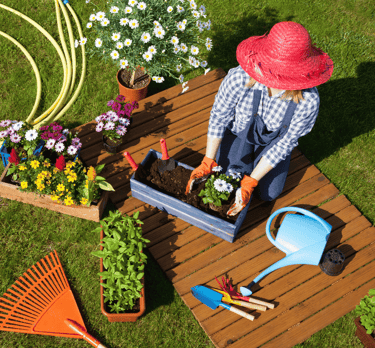


Choose one next step.
Which of the following are you?
Permaculture Gardens - your online resource for organic & sustainable gardens.
Contact
permaculturegardens@gmail.com
Bethany Farm
41558 Stumptown Rd.,
Leesburg, VA 20176
